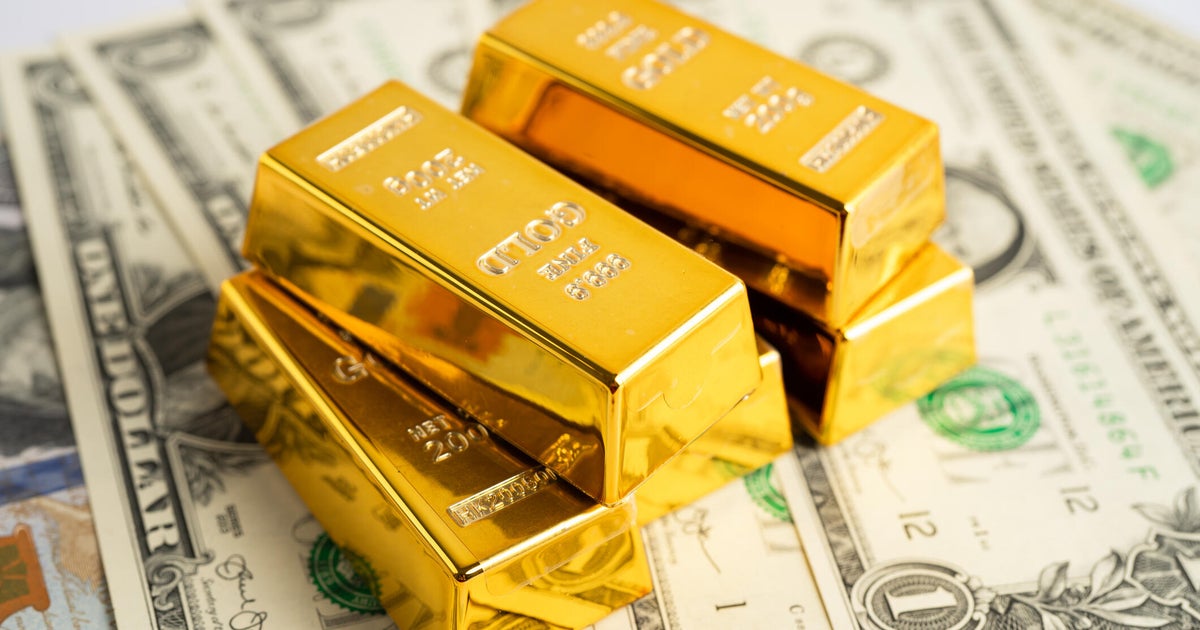Getty Images
With July winding down and the price of gold sitting at around $3,300 per ounce, investors have one burning question: Could it finally get to $3,500 before the month ends? After a strong rally that saw prices climb from $2,700 in January to $3,400 in April, even a modest push could send gold to new highs.
But the precious metal has been stuck in a tight range since that April peak, keeping investors on edge as the key resistance level remains stubbornly out of reach. While gold continues to draw support from inflation concerns and global tensions, the recent consolidation suggests momentum may be fading.
So, will gold finally pierce this critical threshold, or are investors in for more sideways action? We asked market experts to weigh in on what’s likely to happen and what factors could tip the scales in either direction.
Get invested in gold before the price surges again here.
Could gold prices reach $3,500 per ounce this July?
“I don’t see gold prices hitting $3,500 until either [Jerome] Powell is replaced or the Fed lowers interest rates,” Ben Nadelstein, head of content at gold yield marketplace Monetary Metals, explains. Since neither change looks probable this month, he expects gold to stay below the target.
Brandon Aversano, CEO of precious metals buyer The Alloy Market, points out that the short timeframe also works against gold reaching $3,500. Any notable price jump would need “a new major economic headwind or increased global instability,” he says. With those surprises unlikely and July almost over, Aversano expects prices to stay consistent.
Not everyone sees the $3,500 mark as out of reach, though. Brett Elliott, marketing director at American Precious Metals Exchange (APMEX), notes that gold can make surprising moves. “[It] sometimes moves over 3% in a day [with the right] catalyst,” Elliott says. He points to trade policy developments as one factor that could provide the bump gold needs.
Learn more about investing in gold in today’s economic climate now.
What could push gold prices near or from $3,500 this July?
Market analysts point to four drivers that will shape gold’s performance in the near term:
Central bank activity
Central banks have been significant gold buyers in the last few years, and their purchasing decisions can quickly move markets. They buy the precious metal to diversify away from other currencies or hedge against economic uncertainty.
“If we start to see central banks buying gold again at record paces, we may see an increase in gold prices,” Aversano says. “[But] if we see central bank demand cooling, we may see a small drop.”
Geopolitical events
Political upheaval typically sends investors rushing from stocks and bonds into precious metals as a safe haven. The wild card for July is whether new crises unfold. Elliott points out that any black swan event that disrupts the geopolitical or macroeconomic landscape could give gold the boost it needs to hit $3,500.
With tensions already high in several regions, however, gold’s current price likely reflects most of the obvious risks. Any move to $3,500 would probably need to come from something markets aren’t already watching.
Inflation data
Nadelstein explains that while inflation has been “quietly simmering,” any sharp shifts in the data could signal underlying economic weakness. When investors worry about the economy, they often increase their gold holdings. This drives up demand and can lift prices higher.
Monthly Consumer Price Index (CPI) releases are worth watching. According to Aversano, gold prices usually follow inflation trends — meaning these reports could provide the spark gold needs to break through higher.
U.S. dollar movements
When the dollar gains strength against other currencies, it pulls investment money away from gold and back into dollar-based assets. Nadelstein warns that a sudden dollar spike could put downward pressure on prices just when gold needs momentum to break through $3,500.
Many analysts recommend tracking dollar movements through the U.S. Dollar Index (DXY). This measures the dollar’s value against a group of major currencies. Any unexpected dollar strength in the coming weeks could derail gold’s move toward the target.
The bottom line
Gold may or may not reach $3,500 this July, but Aversano advises keeping an eye on certain indicators to gauge gold’s future direction. “Watch bond and yield markets … and [pay attention] to Fed language and policy positions,” he says.
If you want to tap into gold investing, consulting a financial advisor with experience in precious metals may be beneficial. They can help you weigh options, including gold IRAs, gold ETFs and physical gold bullion, based on your risk appetite and financial goals.
(Except for the headline, this story has not been edited by PostX News and is published from a syndicated feed.)


